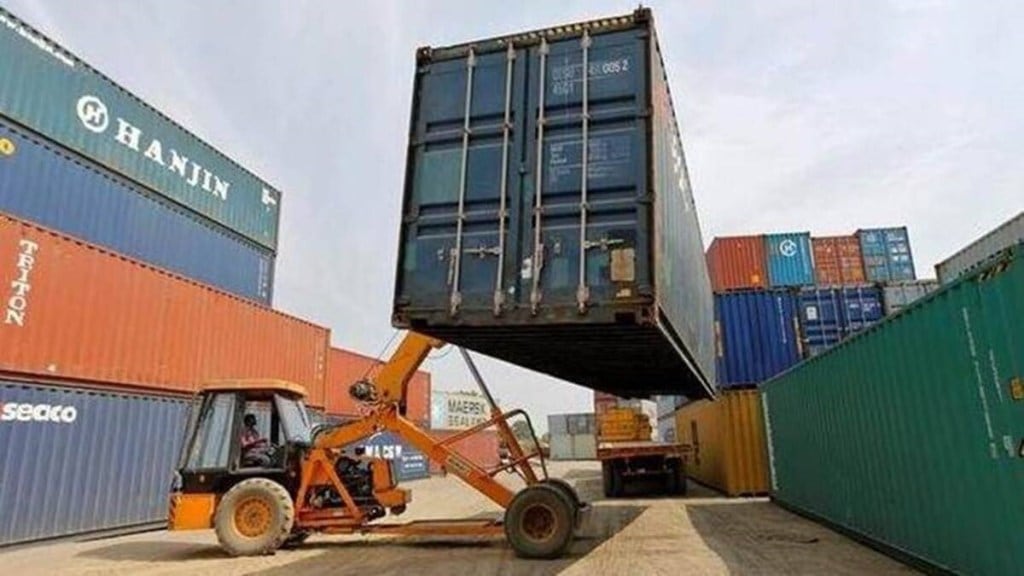Faced with a tricky task of balancing growth with fiscal consolidation imperatives amid mounting external headwinds, the government will seek to further improve the quality of spending in the Budget for FY24 to stir economic activities, resisting the temptation of resorting to populism ahead of the 2024 general elections.
Economists who FE spoke to said, given its elevated multiplier effect, budgetary capital expenditure, despite its limitations, will continue to get a push and be used for growth and job creation. States and CPSEs could be nudged to raise their capex as well.
Enhanced public capex is expected to complement private capex, which the government feels is showing early signs of a revival, and help herald investment-led economic growth when both private consumption (internal demand) and exports (external demand) are faltering. A clutch of production-linked incentive schemes in sectors like textiles, electronic components, furniture, toys and leather will also come in handy.
Private final consumption expenditure, the principal pillar of the economy, is estimated to shrink 0.2% in the second half of this fiscal. Exports barely rose in November after a 16.7% contraction in October.
However, the government is unlikely to announce any mega consumption booster for fears of stoking fresh inflationary pressure and falling foul with the central bank’s rationale for the rate hikes. Moreover, the Centre is conscious of the fact that GDP growth will decelerate in FY24 (most expect it to ease to about 6% from the estimated 7% in FY23) as global economic slowdown accentuates, and any fiscal profligacy will only exacerbate its already-bloated debt and interest burden. It will also complicate the Centre’s efforts to bring down fiscal deficit to the targeted 4.5% of GDP by FY25 from the budgeted 6.4% in FY23.
So, within the limited fiscal space, the government could roll out steps to address pain points, including decelerating growth in private consumption and exports, and a potential slowdown in the farm sector expansion. Import duties on dozens of items — from jewellery, certain electronics and electrical products to helicopters — could be raised to stimulate domestic manufacturing and protect investors in the PLI sectors. At the same time, exports will likely be promoted through timely tax remission, enhanced outlay for R&D and marketing, easy imports of raw materials and restructuring of inverted duty structure in certain items.
Also read: Underground Mumbai Metro 3: 60 percent of track laying work completed, says MMRC
Moreover, given the renewed focus on green financing and climate change in the wake of India’s G20 presidency, sovereign green bonds could make a comeback in FY24, with an issue size larger than the proposed Rs 16,000 crore for this fiscal. Moreover, measures to encourage the reduction of carbon footprint in the economy could also features in the Budget.
Pronab Sen, former chief statistician and chairman of the National Statistical Commission, told FE: “I don’t think the government has adequate space to do much, given the need to reduce fiscal deficit. It has increased public capex quite a lot. That could continue. It may bury a few programmes and launch some new ones but mostly it could just tinker around a lot of schemes.”
N R Bhanumurthy, vice-chancellor of Bengaluru’s BASE University, said the Centre may raise the amount of long-term, interest-free loans to states for capex in FY24 from Rs 1 trillion this fiscal. He expects the government to roll out measures to address potential risks to the farm sector, including likely El Nino effect (which causes drought), migration of labourers from agriculture to industrial sectors (as the economy expands), less crop area and rising credit issues. So, the Budget may seek to tackle any potential land, labour and capital issues in the farm sector.
This means the government may boost allocation for programmes like NREGA and raise the farm lending target substantially. Some income-generating, direct benefit schemes for the rural population could also be extended or see a hike in outlay, Bhanumurthy anticipated.
The farm and allied sector grew in the range of 3% to 5.5% since FY20, decent performance by its standards. The farm lending target was raised to Rs 18 trillion for FY23 from Rs 16.5 trillion a year ago.
“Moreover, the government could raise basic customs duties on a range of products to help domestic manufacturers. It may also take steps to both protect and promote exports,” Bhanumurthy added.
Aditi Nayar, chief economist at Icra, said: “In the backdrop of a global growth slowdown and geopolitical uncertainty, we anticipate that the FY24 Budget will focus on supporting the domestic economic growth, with a continued impetus towards infrastructure and capacity development.” She expects a double-digit hike in capex to Rs 8.5-9 trillion.
Nayar also expects continued support towards the rural economy and the possibility of a “big-bang feel-good social sector scheme, which could be funded by the cushion provided by lower expenditure on subsidies”.
The government will also seek to curtail the pace of rise in revenue spending, as it expects a moderation in its fertiliser subsidy next fiscal in the wake of an anticipated drop in oil prices.
The government will likely trim its deficit target for FY24 to 5.8% or thereabout, against the budgeted 6.4% for this fiscal. The Centre was forced to push up spending substantially in two of the three years through FY23 to soften the blow of the pandemic and the Ukraine war. Total expenditure climbed from Rs 26.86 trillion in FY20 to Rs 37.94 trillion in FY22 and may further swell to about Rs 42 trillion in FY23, sources recently told FE.
Despite the rise in revenue spending, the government hasn’t diluted focus on capex. In fact, in the aftermath of the pandemic, the central government raised its budgetary capex by as much as 27% on year in FY21, 39% (albeit including equity infusion into Air India Assets Holding) in FY22 and 27% (budgeted) in FY23 — way above the increase in overall Budget size of the relevant years.

